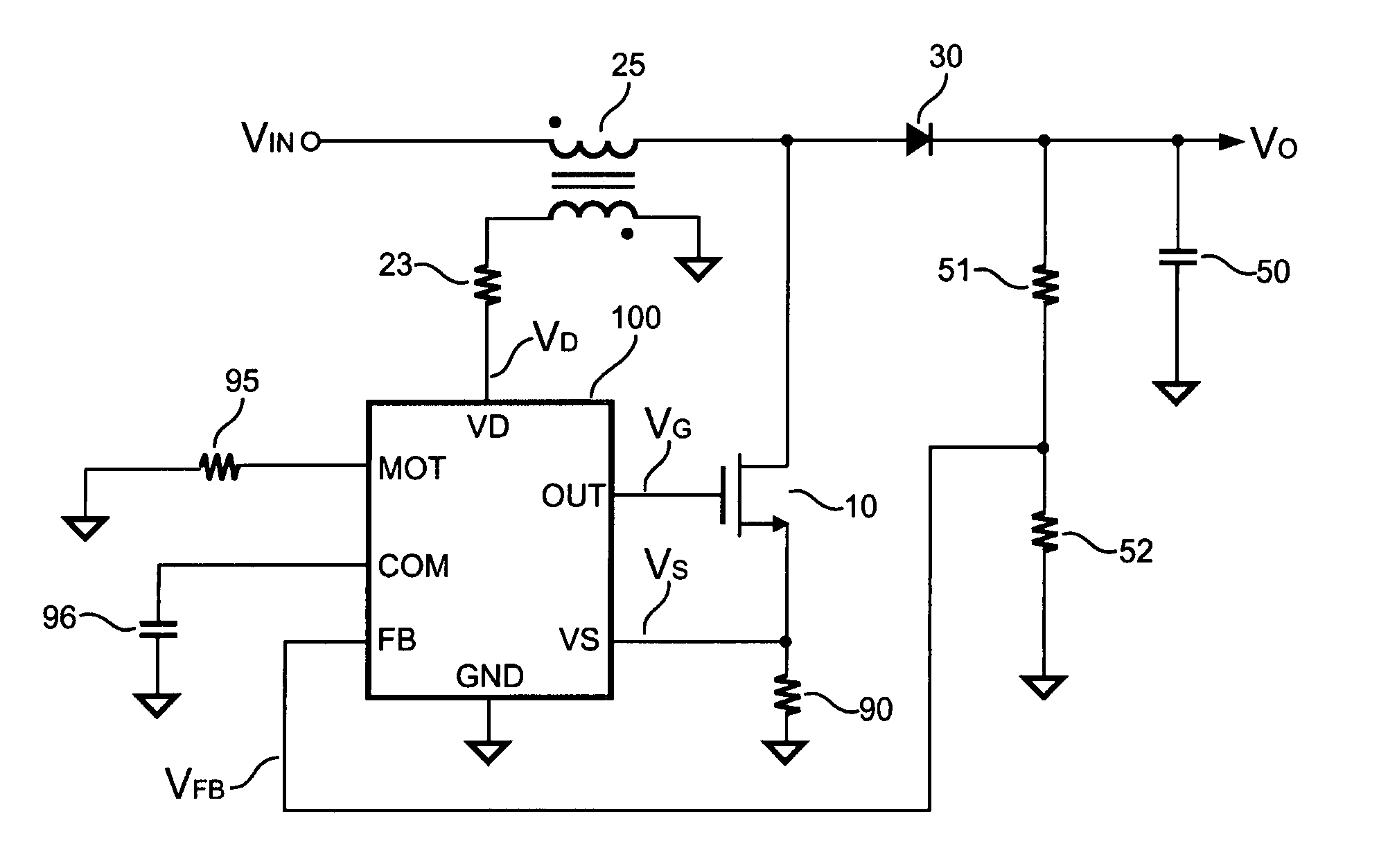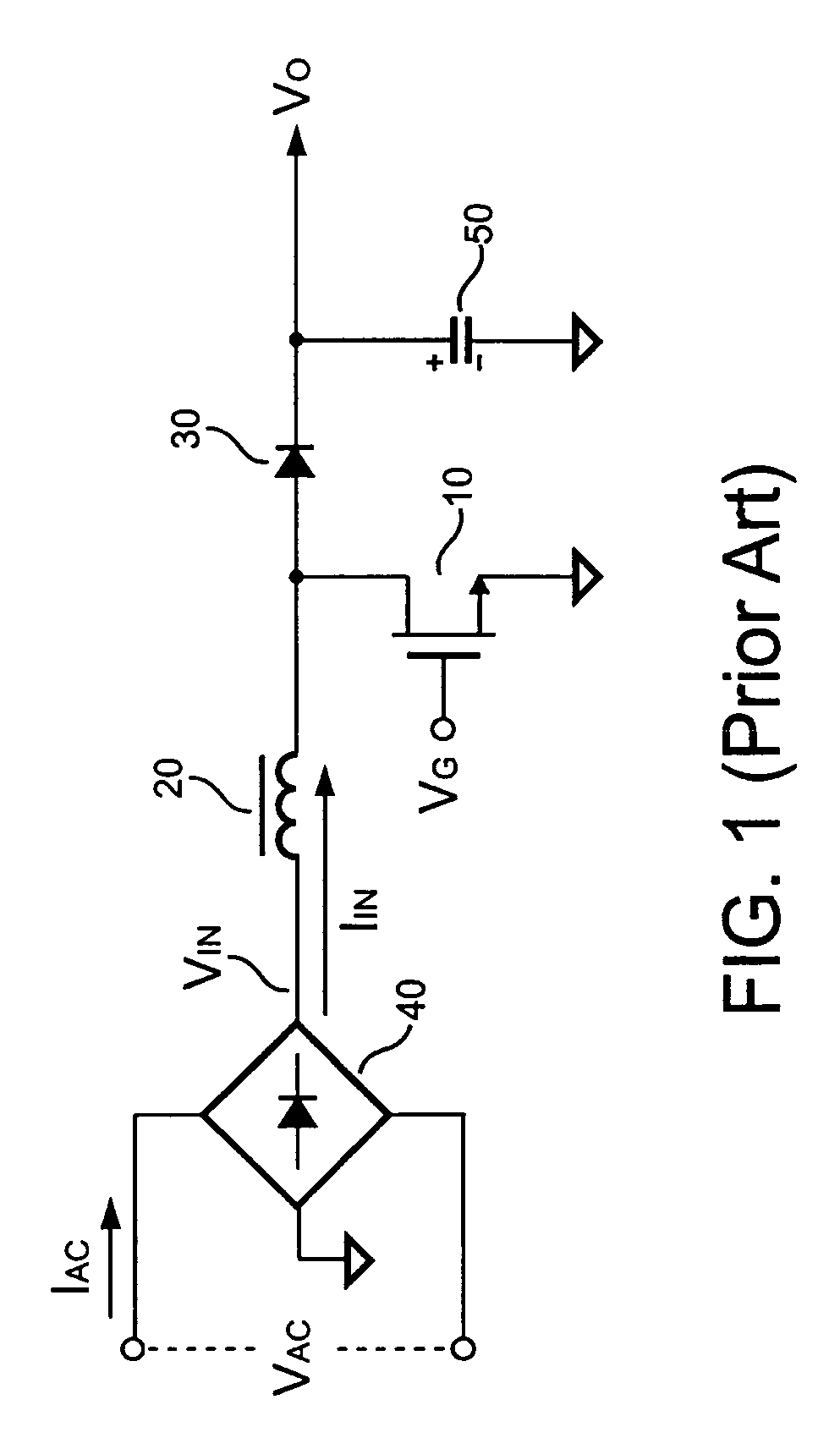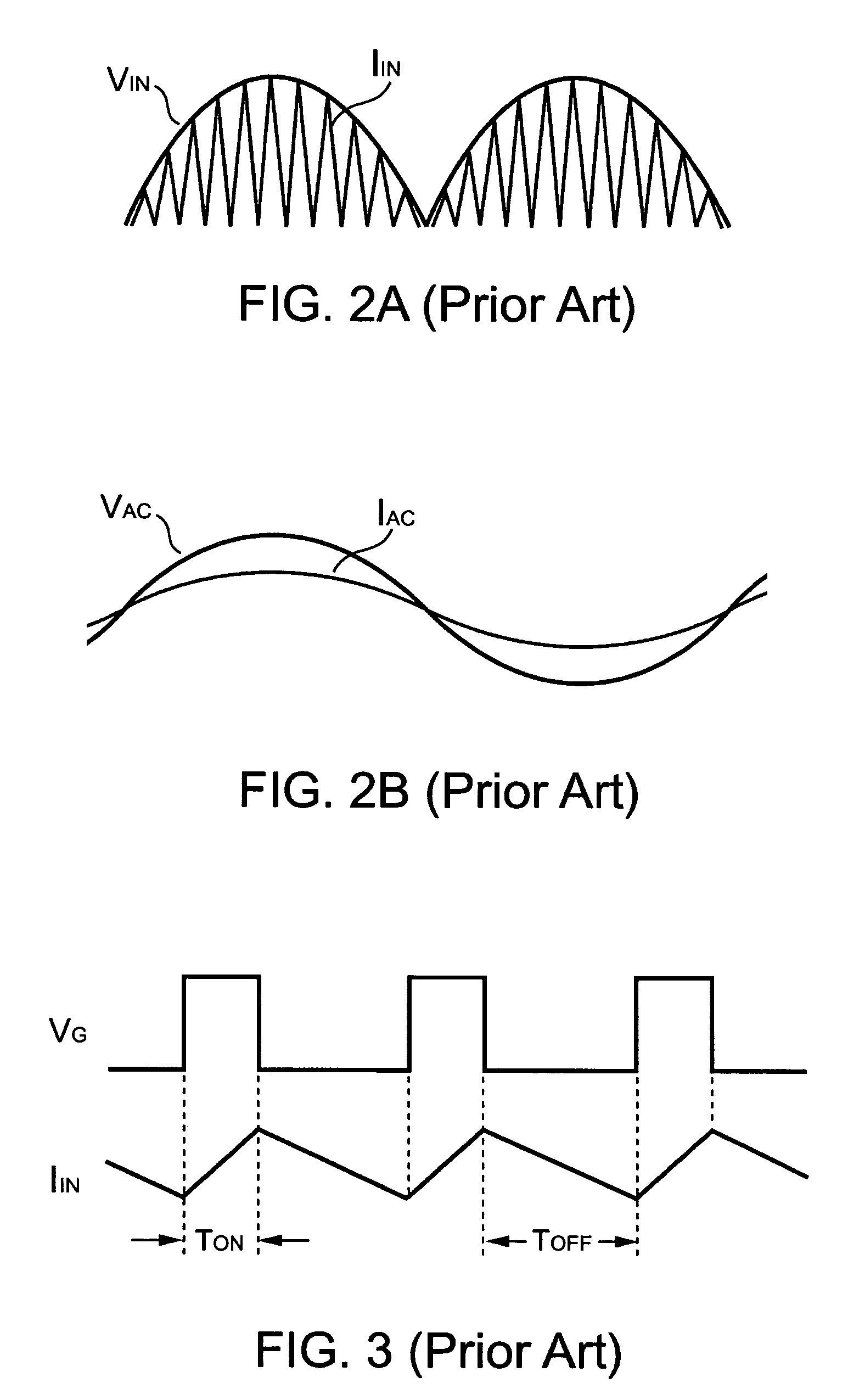Switching control circuit for discontinuous mode PFC converters
- Summary
- Abstract
- Description
- Claims
- Application Information
AI Technical Summary
Benefits of technology
Problems solved by technology
Method used
Image
Examples
Embodiment Construction
[0025]FIG. 7 is a schematic diagram of a PFC converter in discontinuous mode in accordance with an embodiment of the present invention. Using the PFC converter, an AC line input is converted to a DC output Vo, in which a transistor 10 controls the energy by switching an input voltage (VIN) via an inductor 25, a rectifier 30, and a capacitor 50. The purpose of the PFC is to control the current waveform of the AC line input as a sinusoidal waveform and to maintain the phase of the current to be the same as that of the line input voltage VAC. Through the rectification of the bridge, the VIN is always positive with respect to the ground of the PFC converter.
VIN(t)=Vp sin (ωt),
where Vp=√2×VIN (rms) and t=time;
The input current is similarly expressed as the following:
IIN(t)=Ip sin (ωt),
where Ip=√2×IIN (rms);
The input power of the PFC converter is then given by the following:
Pin=Vp×Ip / 2.
Taking the efficiency (η) into consideration in the equation, the output power is then given by the foll...
PUM
 Login to View More
Login to View More Abstract
Description
Claims
Application Information
 Login to View More
Login to View More - R&D
- Intellectual Property
- Life Sciences
- Materials
- Tech Scout
- Unparalleled Data Quality
- Higher Quality Content
- 60% Fewer Hallucinations
Browse by: Latest US Patents, China's latest patents, Technical Efficacy Thesaurus, Application Domain, Technology Topic, Popular Technical Reports.
© 2025 PatSnap. All rights reserved.Legal|Privacy policy|Modern Slavery Act Transparency Statement|Sitemap|About US| Contact US: help@patsnap.com



